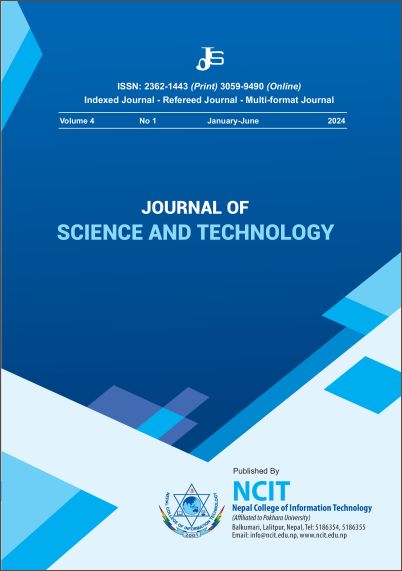Comparative Study on Wavelet-based Linear and Non-Linear Image Denoising Techniques
DOI:
https://doi.org/10.3126/jost.v4i1.74554Keywords:
Image, Denoising, Gaussian Noise, Salt and Pepper, Noise, Discrete Wavelet Transform, Thresholding, Linear Wavelet Technique, Non-Linear Wavelet Techniques, Peak-Signal-to-Noise-Ratio (PSNR)Abstract
Denoising an image is still a challenging domain in the image processing research area. Denoising means removing noise from a corrupted image but the challenge is to retain different details of an image. The search for efficient image-denoising methods is still a valid challenge at the crossing of functional analysis and statistics. In spite of the sophistication of the recent methods, most algorithms have not yet attained a desirable level of applicability. All the algorithms show a high outstanding performance when the image model corresponds to the algorithm assumptions but it generally fails to create artifacts or change the main structures of the original image. De-noising of natural images corrupted by white Gaussian noise using wavelet techniques is very effective because of its ability to capture the energy of the signal in a few energy transform values or coefficients. This method performs well under a number of applications because wavelet transform has the compaction property of having only a small number of large coefficients where the remaining wavelet coefficients are very small. The choice of threshold in wavelet-based image denoising is very critical as well as image restoration and noise reduction are eminent problems in almost all image processing applications. Numerous image restoration methods have been developed, each of which has its own advantages and limitation. For the removal of salt and pepper noise on natural images, different wavelet techniques are tested on various grayscale and colour images. Here, linear and non-linear wavelet transform denoising techniques of images are studied and compared using thresholding techniques such as Weiner, soft, hard, semi-soft, LevelShrink, SUREShrink, VisuShrink and BayesShrink.




